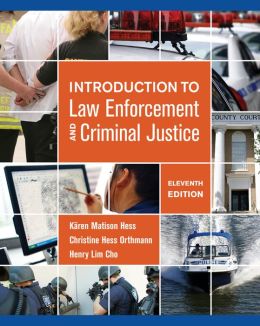Business Law Discussion Posts
LA 1 & 2: Read/watch all assigned materials listed for the week in Course Content. Cite to these materials with in-text citations in all responses you post to these LAs.
Please DO NOT use outside internet resources for the LAs this week.
Please do not use attachments.
Create a separate posting for each LA, i.e., one post for LA 1, a separate post for LA 2.
Label each LA with appropriate titles, such as “LA 1” and “LA 2”, etc. and your name. Label each part of each LA.
LAs are to be written in paragraph format with appropriate in text citations in APA format. Review How to Use APA in Content.
All LAs are due Thursday, 11:59 pm, ET.
Discussion 1 & 2: Respond to at least one colleague for each LA. Respond substantively and comprehensively and interactively so as to promote further discussion. Use in-text cites in APA format, as needed.
Responses to colleagues are due Sunday, 11:59 pm, ET.
I will respond to most submissions, and often ask further questions. Please try to respond to my postings/questions to you, but your follow-up responses to my comments/questions to you are not included in the required responses to colleagues as described above.
Post a separate reply for each learning activity, i.e., one reply post for Learning Activity 1 and a separate reply post for Learning Activity 2.
Answer each question part in paragraph format using APA in text citations. You do not need to use resources other than those assigned, unless specifically instructed to do so. Comprehensively, specifically justify/support and explain your rationale for your conclusions.
Learning Activity 1: Due Thursday, 11:59 pm ET
Scenario: Rentals, LLP (Rentals), an office equipment rental company, owns the land, office building and 2 warehouse buildings on which it has been
operating. Rentals advertised the property “For Sale by Owner: $650,000”
on a sign posted on the property, and in various news and sales publications.
A licensed real estate appraiser inspected and valued the property at
$650,000. The 3 other partners in Rentals selected you to represent them in the sale of the property.
Rentals moved its operations to a location across town where it now leases,
under a signed contract with Business Spaces, Inc, larger office and
warehouse facilities.
The 3 owners of Farmers Feed and Grain Company (Farmers) contacted
Rentals to tour the property. Later, you, representing the partnership,
accepted Farmers invitation to dinner to discuss the property and a possible
sale. You and the 3 owners of Farmers had a leisurely dinner, and 2 glasses
of wine each. At the end of dinner, the Farmers owners offered Rentals
$475,000 for the property in an all-cash deal, and you accepted on behalf of
the Rentals partnership.
Farmers owners and Rentals partners signed a sales contract for the sale of
the property for $475,000, but before the deal was completed and before the deed was transferred to Farmers, Rentals’ financial advisor urged Rentals to cancel the contract claiming that the contract was unenforceable because the price offered for the sale was too low and below the appraised value. You, as a representative of Rentals, met with the financial advisor about the matter.
Following the meeting, prepare a memo to the other Rentals partners about the deal with Farmers, advising them about the deal, whether it is valid and enforceable, and why or why not.
Learning Activity 2: Due Thursday, 11:59 pm ET
Scenario: Sabrina Levy, MD, has a medical practice specializing in orthopedic surgery. Dr. Levy is the medical director of the practice that includes 3 other surgeons, a staff of Registered Nurses, Nurse Practitioners (NPs), x-ray technicians, medical records specialists, IT specialists, reception and office personnel, and a practice management director.
Following surgery, most patients have x-rays taken at Dr. Levy’s office. Typically, patients come to Dr. Levy’s office for x-rays, go directly to the x-
ray department without seeing a physician, and follow up at a later
appointment with a surgeon to discuss x-ray results.
A patient, Dan, has had several x-rays at Dr. Levy’s office for an x-ray, each
followed by a later appointment with one of the physicians to discuss results.
Dan refused to pay the $500 bill for the x-rays, claiming that he did not sign a written contract for the x-rays or have a specific oral agreement regarding the x-rays. An increasing number of patients are also refusing to pay for x-rays claiming that they did not have a written or oral agreement to pay for x-rays. This has resulted in time-consuming and costly re-billing and collection fees, and sometimes lawsuits for Dr. Levy’s practice.
Dr. Levy asked you, the practice management director, to consult with an
attorney specializing in business about this matter, and whether it is
necessary to require patients to sign written contracts for x-rays or whether the current procedures for medical services are proper and sufficient.
Following your meeting with the attorney, write a brief report addressed to Dr. Levy summarizing advice regarding whether specific written contracts are required for x-rays and why or why not.



